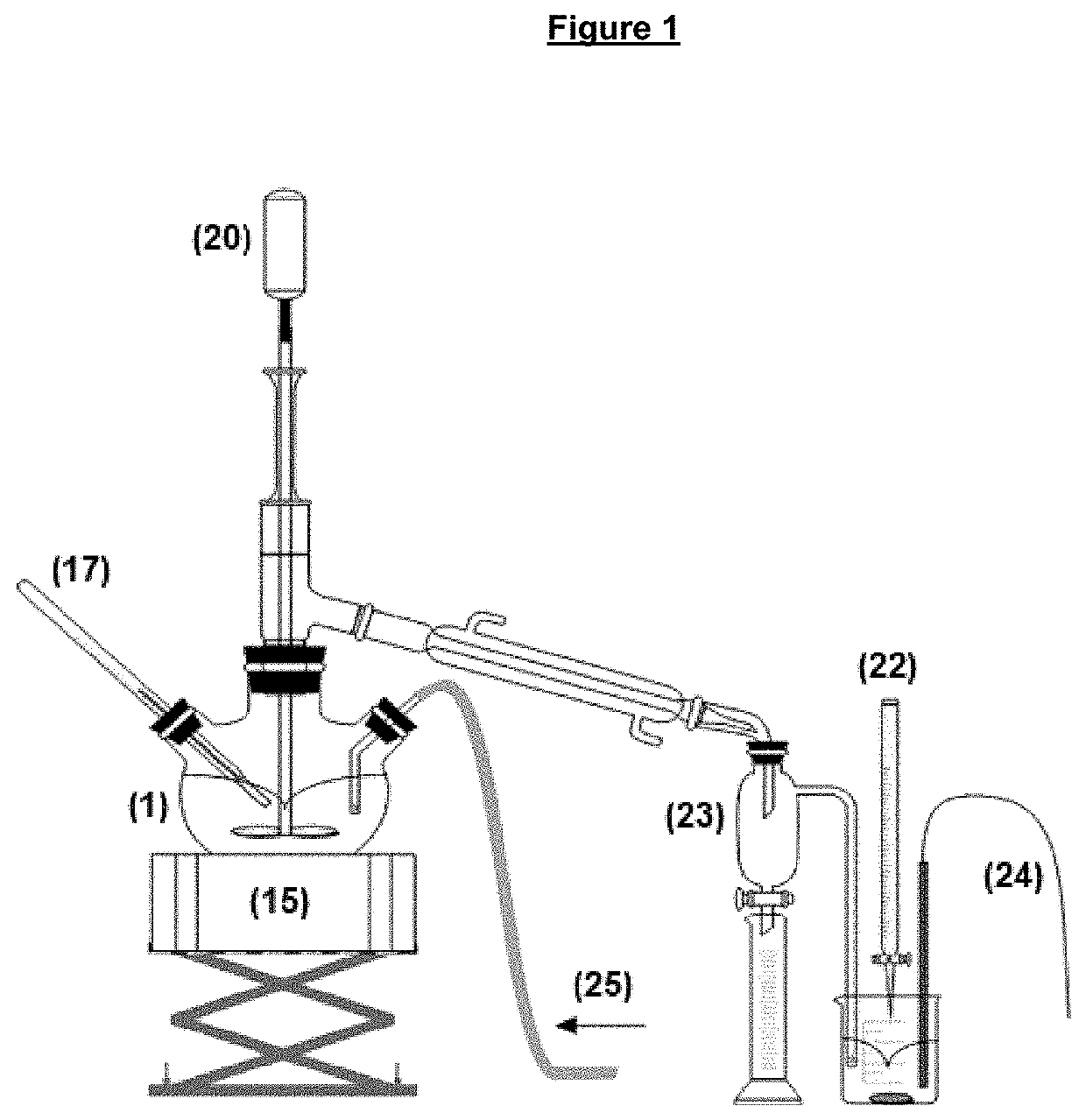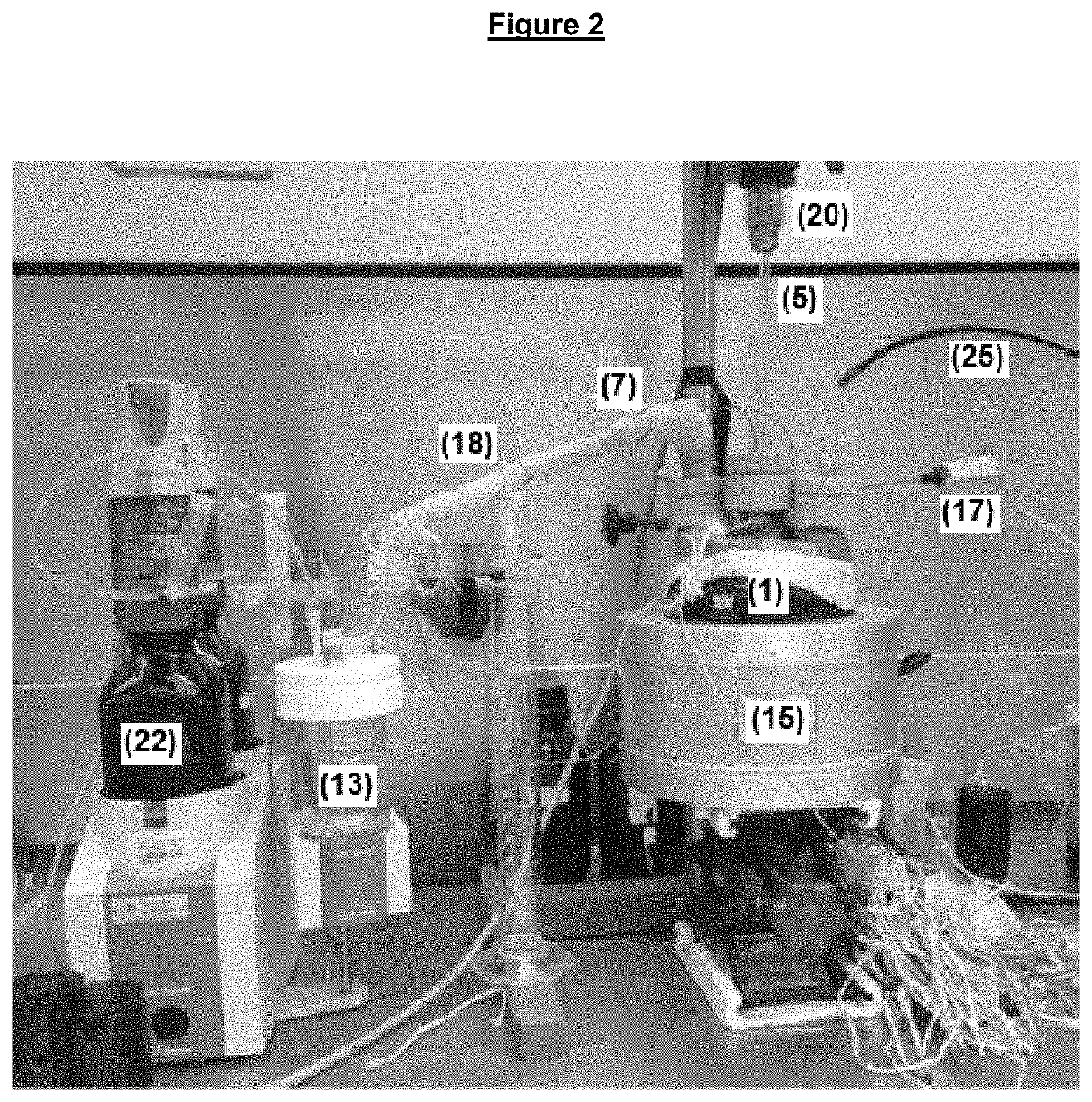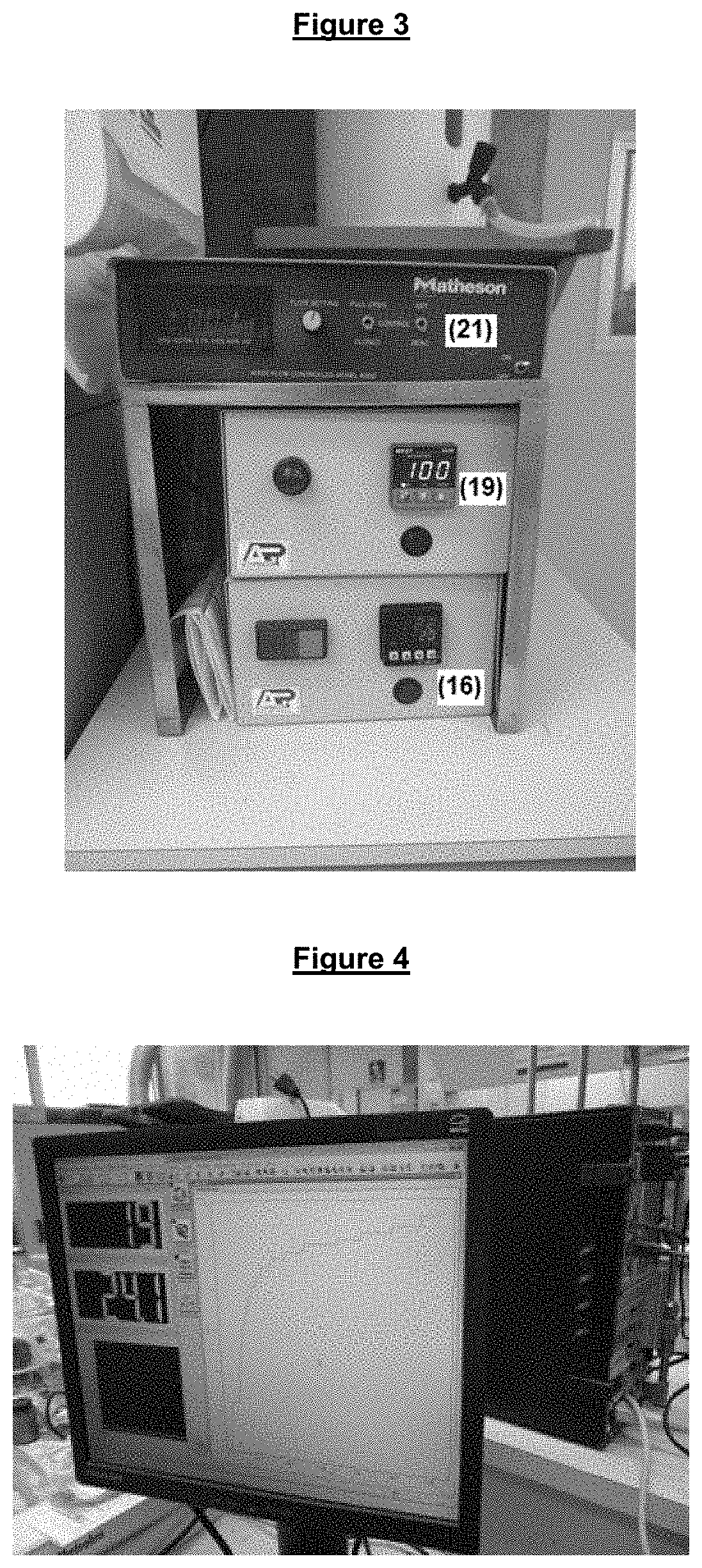Method and apparatus for evaluating hydrogen chloride evolution as a function of temperature
a hydrogen chloride and temperature-dependent technology, applied in the field of methods and apparatus for evaluating hydrogen chloride evolution as a function of temperature, can solve the problems of inability to continuously monitor the evolution of chloride, the nhsub>4/sub>cl deposit inside the fractionating column can be extremely harmful to the operation and the integrity of the equipment,
- Summary
- Abstract
- Description
- Claims
- Application Information
AI Technical Summary
Benefits of technology
Problems solved by technology
Method used
Image
Examples
example 1
nilinium Chloride
[0094]117.2 mg of 4-nitro-anilinium chloride were added to 1,095 kg of chloride-free vacuum-hydrogenated gasoil (paraffin oil) contained in a three-way flask, which was heated according to the following temperature curve:
[0095]i. 35° C., for 2 minutes;
[0096]ii. 35° C. to 120° C., in 72 minutes;
[0097]iii. 120° C., for 180 minutes (isothermal).
[0098]Along the entire heating curve, N2 was bubbled into the paraffin oil at a flow rate of 180 mL / min. The gas flow was conducted to a flask containing 190 mL of water, whose electrochemical potential was adjusted to 20 mV. At each displacement of the initial electrochemical potential, resulting from the introduction of HCl into the flask, an AgNO3 solution with a concentration of 0.1 mol / L was added by an automatic titrator until the return to the initially adjusted electrochemical potential.
[0099]Finally, the titrant consumption curve, and consequently the evolution of HCl over the temperature program, are obtained. As can b...
example 2
f Alkali Metal Chlorides
[0100]76.6 mg of sodium chloride (NaCl), 37.1 mg of calcium chloride dihydrate (CaCl2.2H2O) and 24.6 mg of magnesium chloride hexahydrate (MgCl2.6H2O) were diluted in 5 mL of deionized water. This solution was transferred to a round-bottom flask containing 900 g of synthetic lubricating oil (paraffin oil).
[0101]The following temperature program was used:[0102]i. 35° C., for 2 minutes;[0103]ii. 35° C. to 100° C., in 30 minutes;[0104]iii. 100° C. to 150° C., in 60 minutes;[0105]iv. 150° C. to 330° C., in 150 minutes;[0106]v. 330° C. for 240 minutes (isothermal).
[0107]Along the entire heating curve, N2 was bubbled into the paraffin oil at a flow rate of 180 mL / min. Because an aqueous solution was added to the paraffin oil in this example, and not a pure substance, the line that leads the flow of N2 containing HCl to the flask where the titration occurs was kept at 150° C. to prevent water condensation. The electrochemical potential of the water where HCl is abso...
example 3
l Saline Solution
[0109]5 ml of industrial saline solution was added to the same paraffin oil in Example 2, containing 120 mg / L sodium, 26 mg / L calcium, 5.5 mg / L magnesium, 610 mg / L chloride and 129 mg / L nitrogen. The same temperature program as that used with the paraffin oil and the transfer line to the titration flask was used. HCl evolution intensified from 110° C. and at the end reached 11%, as seen in FIG. 7.
[0110]Note that although the present invention has been described in relation to the attached drawings, it may undergo modifications and adaptations by technicians versed in the subject, depending on the specific situation, but as long as it is within the inventive scope defined herein.
PUM
| Property | Measurement | Unit |
|---|---|---|
| boiling point | aaaaa | aaaaa |
| temperature | aaaaa | aaaaa |
| height | aaaaa | aaaaa |
Abstract
Description
Claims
Application Information
 Login to View More
Login to View More - R&D
- Intellectual Property
- Life Sciences
- Materials
- Tech Scout
- Unparalleled Data Quality
- Higher Quality Content
- 60% Fewer Hallucinations
Browse by: Latest US Patents, China's latest patents, Technical Efficacy Thesaurus, Application Domain, Technology Topic, Popular Technical Reports.
© 2025 PatSnap. All rights reserved.Legal|Privacy policy|Modern Slavery Act Transparency Statement|Sitemap|About US| Contact US: help@patsnap.com



